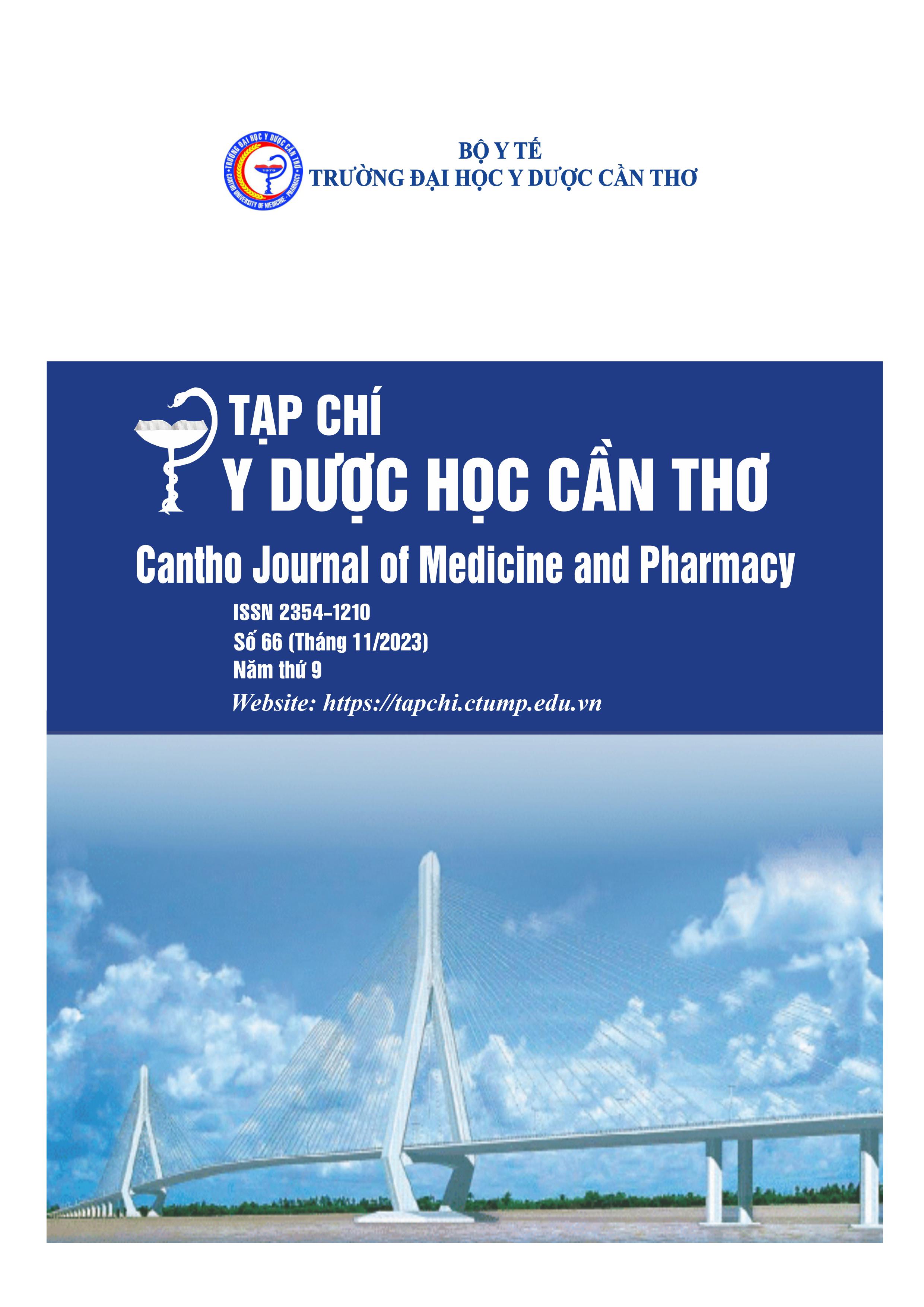EVALUATION OF THE EARLY TREATMENT RESULTS OF POPLITEAL ARTERIAL INJURY IN KNEE FRACTURE AT CAN THO CENTRAL GENERAL HOSPITAL FROM 2021 TO 2023
Main Article Content
Abstract
Background: The knee is a special structure that ensures the function of the lower limb, this is also the area that is easily injured when an accident occurs. Knee fractures, especially accompanied by popliteal artery injury, if not diagnosed and treated in time can lead to disability, even death. Objective: To evaluate the results of treatment of popliteal artery injuries in knee fractures. Materials and methods: Patients with popliteal artery injury in knee trauma were diagnosed determined based on computed tomography angiography, surgical treatment to restore blood circulation. Success was assessed by limb survival and blood circulation after surgery. Data analysis using SPSS 20.0 software. Results: There were 43 patients with knee fracture and popliteal artery injury who underwent surgical repair of popliteal artery circulation. The average age of this patient group was about 32.09 ± 13.05, with 67.44% being male. The average acute limb ischemia time was 7.54 ± 3.62 hours. Among them, there were 6 cases of late arterial occlusion after more than 24 hours of hospitalization. There were 2 cases of limb amputation, accounting for 4.65%. There were 20,93% of patients who had arterial re-occlusion after the first surgery and needed reoperation. Conclusions: Popliteal artery injury is a severe injury in the lower limb, which can result in limb amputation or even death in patients. It is necessary to diagnose early and treat properly to contribute to saving the limb and limiting complications.
Article Details
Keywords
Popliteal artery injury, revascularization, knee fracture
References
2. Perkins ZB, Yet B, Sharrock A, Rickard R, Marsh W vs et al. Predicting the Outcome of Limb Revascularization in Patients With Lower-extremity Arterial Trauma: Development and External Validation of a Supervised Machine-learning Algorithm to Support Surgical Decisions. Ann Surg. 2020.272(4). 564-572. DOI: 10.1097/SLA.0000000000004132.
3. Alarhayem AQ, Cohn SM, Cantu-Nunez O, Eastridge BJ, Rasmussen TE. Impact of time to repair on outcomes in patients with lower extremity arterial injuries. J Vasc Surg. 2019. 69(5). 1519-1523. DOI: 10.1016/j.jvs.2018.07.075.
4. Magee GA, Dubose JJ, Inaba K, Lucero L, Dirks RC vs et al. Outcomes of vascular trauma associated with an evolution in the use of endovascular management. J Vasc Surg. 2023. 4. 551557, DOI: 10.1016/j.jvs.2023.02.025.
5. Dương Ngọc Thắng, Vũ Ngọc Tú, Trần Trung Kiên, Nguyễn Hữu Ước. Kết quả phẫu thuật điều trị chấn thương động mạch khoeo do trật khớp gối tại bệnh viện Hữu nghị Việt Đức. Tạp chí Phẫu thuật tim mạch và Lồng ngực Việt Nam. 2020. 2(4), 470-475.
6. Ramdass MJ, Muddeen A, Harnarayan P, Spence R, Milne D. Risk factors associated with amputation in civilian popliteal artery trauma. Injury. 2018. 49(6), 1188-1192.DOI: 10.1016/j.injury .2018.04.028.
7. Vũ Ngọc Tú, Trần Trung Kiên, Phùng Duy Hồng Sơn. Phẫu thuật điều trị chấn thương động mạch khoeo tại bệnh viện Hữu Nghị Việt Đức giai đoạn 2017-2019. Tạp chí y học Việt Nam.526(1),374-379. DOI: 10.51298/vmj.v526i1A.5372
8. Lê Thanh Phong. Reduced Time to Surgery and Prophylactic Fasciotomy May Result in Improved Outcomes in Popliteal Artery Injuries.Ann Vasc Surg,30(23),185-191. DOI:10.1016/j.avsg.2023.03.019.
9. Hoàng Anh Công, Nguyễn Hữu Ước, Bùi Thanh Doanh. Đặc điểm lâm sàng, hình thái tổn thương và kết quả điều trị chấn thương, vết thương động mạch chi dưới tại Bệnh viện Hữu nghị Việt Tiệp. Tạp chí phẫu thuật tim mạch và lồng ngực Việt Nam. 2021. 34, tr. 99-106. DOI: https: //doi.org/ 10.47972/vjcts.v34i.622.
10. Kluckner M, Gratl A, Gruber L, Frech A, Gummerer M vs et al. Risk factors for major amputation after arterial vascular trauma of the lower extremity. Scand J Surg. 2022. 111(1), 84-86. DOI: 10.1177/14574969211070668.


